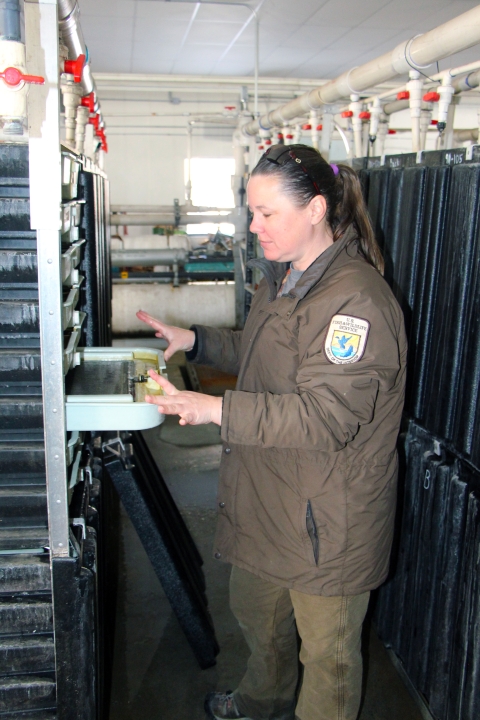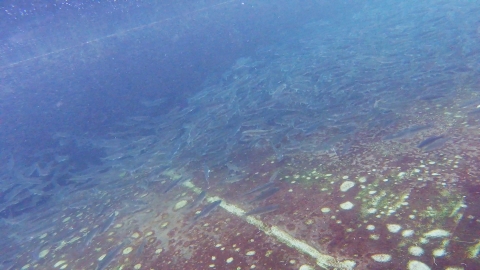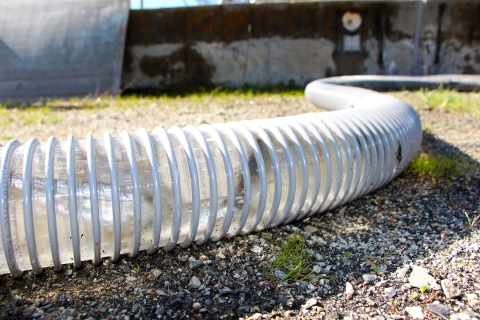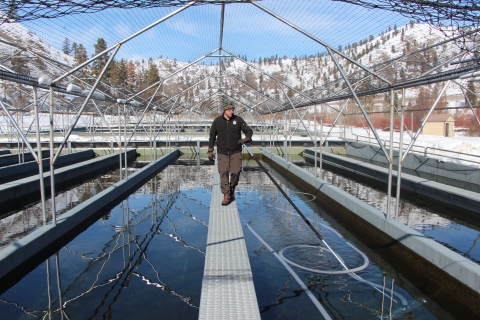What We Do
While salmon returns to the Columbia River Basin from 2018-2021 were generally poor, Entiat's summer Chinook program has been successful, allowing a fishery on the Columbia and Entiat rivers to open.
We have a spring on-site, six wells, and an infiltration gallery to provide water to our summer Chinook. Eggs remain only on chilled well water from October until they are moved as fry to outside raceways in May. Well water is pathogen-free; and chilling it means development is slowed, so the timing for moving them is adjusted to maximize survival.
The fish spend their second winter outside, on a mix of well and river water. Once winter arrives, the water temperature in the Entiat River drops to just above freezing. We use river water to naturalize the growth cycle. This means fish develop at the rate they would naturally if they were in the river rather than in the hatchery. The challenge of keeping water flowing steadily all winter is substantial, but we successfully battle ice in the river and in the pumps, screens, and pipes.
After nineteen months at the hatchery, the fish are released in April to make their own way down the Columbia River, past eight dams, and out into the ocean. Reports occasionally make their way back to us from the coded wire tags collected when our fish are caught in other locations-- like Sitka, Alaska. You can follow our fish, too, by visiting the Fish Passage Center's website.
Our Services
You'll find useful data in this section.
Summer Chinook salmon returns:
- 2020 total number of returned salmon: 4,184
- 2019 total number of returned salmon: 2,882
- 2018 total number of returned salmon: 2,127
- 2017 total number of returned salmon: 1,330
- 2016 total number of returned salmon: 2,106
Track our salmon as they return via the Fish Passage Center's website.
Weather data is collected daily at the hatchery. Data are displayed on the National Oceanic and Atmospheric Administration's website here.
Laws and Regulations
We provide fish to tribes as part of meeting federal tribal trust responsibilities.





